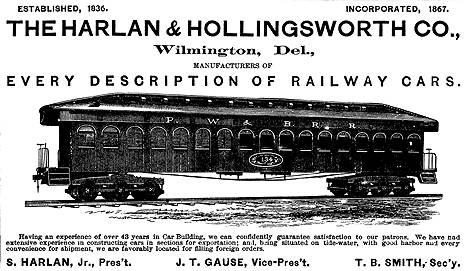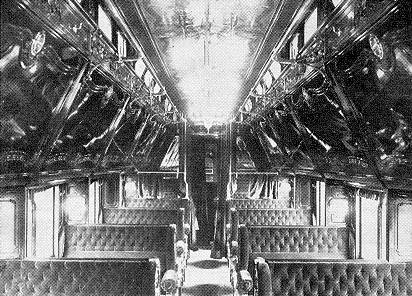Harlan & Hollingsworth - Page 2
--- The Harlan & Hollingsworth Company ---In 1871, a third car builder opened shop at Wilmington. Thomas Wesley Bowers, former Master Car Builder of the Philadelphia, Washington & Baltimore Railroad, and Henry F. Dure, a local architect and builder, formed the partnership of Bowers, Dure & Co. and opened what they called the Wilmington Car Works. Wilmington now had three car builders, and Harlan and Hollingsworth had more competition.
But there seems to have been enough business that all three thrived. At least until the financial panic of 1873 dried up funds for car acquisition by the railroads. Harlan and Hollingsworth seems to have been largely unaffected by this, since it was doing so much as a shipbuilder. And it also had a great deal of foreign business in railroad cars. But nevertheless, after Jackson & Sharp built the first passenger car for one of the narrow gauge railroads beginning to crisscross the western United States, Harlan & Hollingsworth entered this budding market also. Another market for Harlan & Hollingsworth was that of private cars for individuals. About 1875 or 1876 they built a private car for Western banking-mining king Darius O. Mills. The car, named D.O.M., was 53'-10" long, canary yellow with brown, red and dark-green trim, orange trucks with green wheels, and cost $15,000. This car was followed by numerous others.
By the 1880s European lines had largely turned to steel underframes for both freight and passenger cars, and some of these were exported to South America and Mexico. While American railway men talked about it, in 1884 Harlan & Hollingsworth actually built cars for use in Argentina with underframes of steel. Since by this time they had largely converted to the manufacture of iron and steel ships, it would seem they would have been in the forefront of a drive toward greater use of iron and steel in railway cars, but they were not. The development of steel cars was left to the amateurs. Continued |


